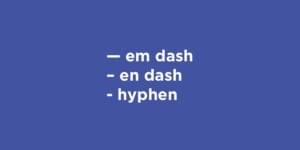Keep up to date on current trends and technologies
Web - Content

How to Optimize Website Content for Featured Snippets
Dipen Visavadiya

7 Reasons NOT to Use a Static Site Generator
Craig Buckler

7 Reasons to Use a Static Site Generator
Craig Buckler

How to Start a Developer Newsletter
Mark Schiefelbein

Bridging the Gap Between UX and Copywriting
Daniel Schwarz

Google Data Studio: a Nifty, Free, Easy-to-use Data Vis Tool
Dmytro Spilka

Writing for Money: Tips for Planning Your Next Article Pitch
Ralph Mason
Display Data Sets in InDesign with Porky
Chris Ward
Average Page Weight Increased Another 16% in 2015
Craig Buckler
4 Simple Things to Remember about Apostrophes
Ralph Mason
The Trick to Writing Fun, Engaging Article Intros
Alex Walker
Static Blogging Tool Face-Off: Middleman vs Jekyll
David Turnbull
How to Create Unforgettable Interface Copy
Jerry Cao
CMS Content Organization Structures: Trees vs Facets vs Tags
Lukas Smith
How to Simplify Form Building with JotForm
Craig Buckler
6 Static Blog Generators That Aren’t Jekyll
David Turnbull
Content Research: The Power of User Interviews
Georgina Laidlaw
The Client’s Guide to What it Actually Takes to Create a Website
Richa Jain
The 100 Year Old Trick to Writing at 240 Words Per Minute
Alex Walker
6 Common Questions About Writing for the Web, Answered
Georgina Laidlaw
Using Python Templates with Jinja and Google App Engine
Brett Romero

Using Data Journalism to Generate Content Ideas
Alexis Ulrich
Showing 22 of 22
